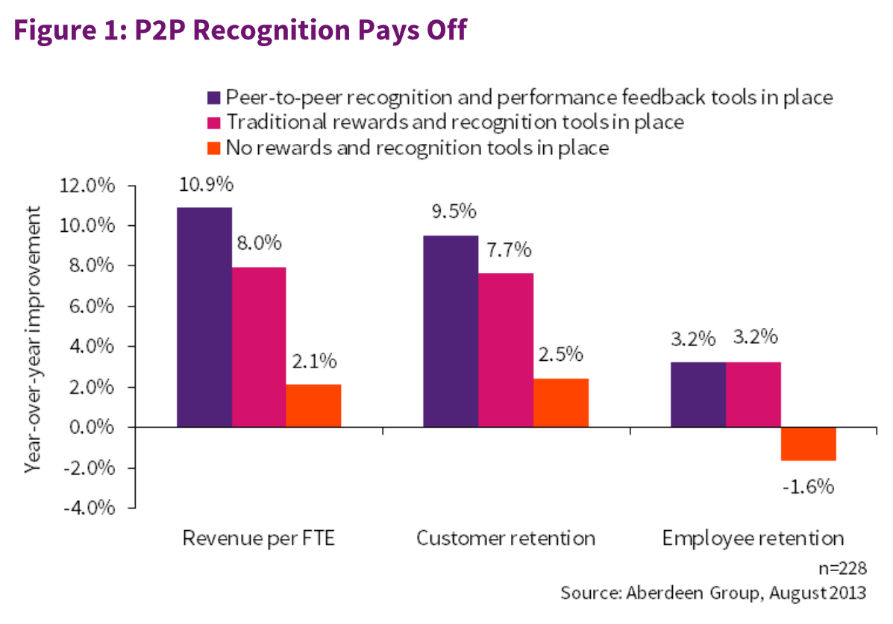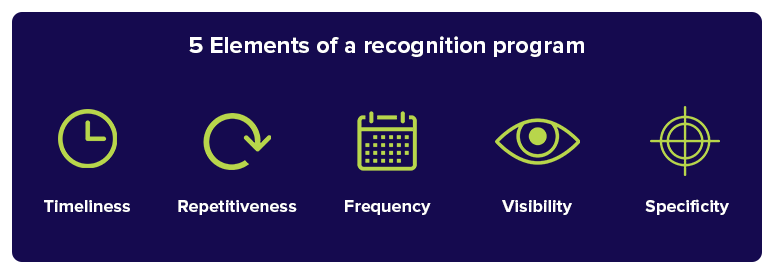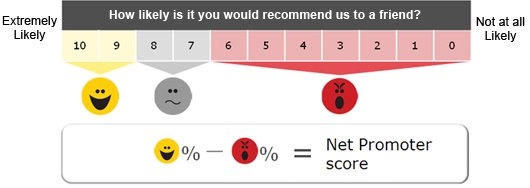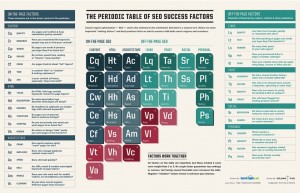— December 28, 2018
An employee recognition program can improve morale, increase productivity, and reduce attrition rates at your agency. Learn how to create one in this guide.
Do your people know how much you appreciate them?
Sure, you pat them on the back and drop the occasional ‘thank you’ email. But do they have a tangible idea of your gratitude and appreciation?
Unless you have an employee recognition program, the answer is “probably not”.
Public praise, thank you messages, and holiday gifts are nice, but they don’t have a real, measurable impact on employee happiness, loyalty, and morale. They leave a gray zone where employees can neither measure their own performance, nor get inspired by the results of their peers.
To solve this problem, you need an employee recognition program.
I’ll show you how to create one for your agency in this guide.
What is an employee recognition program?
The name is self-explanatory – an employee recognition program is a system that acknowledges employees for good performance, hard work, extraordinary service, or exemplary results.
But beyond that mouthful of a definition, an employee recognition and rewards program accomplishes a lot more.
To understand, let’s start from the beginning.
- Recognition is an acknowledgment or special notice of good performance, usually in public and from a superior.
- A reward is a tangible benefit or prize given to the employee to further corroborate the recognition.
The recognition-reward system goes hand in hand. An acknowledgment without a corresponding reward doesn’t quite have the intended impact.
You can’t just tell everyone that an employee performed really well; you have to back it up with “employee of the month” picture on the company notice board.
While there are many reasons to invest in an employee recognition program (and we’ll look at some later), its two biggest benefits are:
- It makes employees feel good about what they receive – both tangible and intangible.
- It helps you reinforce values, boost morale, increase motivation and foster competitiveness.
Think of it as a “pulling” strategy. Employees notice the behaviors being recognized and want to be a part of it. So they internalize those behaviors and prioritize its related metrics in their work.
This, in turn, causes others to adopt the same behaviors because they don’t want to be left out.
This way, rewarding a single behavior “pulls” your entire organization in its direction.
Coincidentally, neuroscience says that when it comes to motivating action, a reward is far more impactful than punishment.
A well-developed employee rewards program is usually self-sustaining. The improvement in performance and productivity offsets the cost of the program itself.
Why create an employee recognition program?
If you’re still not convinced, I’ll share some research-backed reasons to invest in an employee recognition program:
1. Reduces turnover rate: It’s no secret that turnover is a massive problem for agencies. But research shows that companies that have well-developed recognition programs experience nearly 31% lower turnover.
2. Makes employees feel appreciated: 66% of employees say that they would quit their jobs if they felt unappreciated (among millennials, this figure is 76%). This is particularly true for talented employees who usually have other opportunities.
3. Extends your benefits beyond money: Your employees don’t just want money; they also want a good culture, peers they like working with, and a management that values them. A recognition program helps you build this “something else” that truly motivates employees.

Companies with strong peer-to-peer recognition programs experience higher revenues and stronger customer retention (Source)
4. Improves engagement: If your employees are disinterested and unmotivated, consider creating a recognition program. A study showed that it can increase employee engagement by as much as 60%. Or in the words of the author, “turbocharge engagement”.
5. Increase motivation and productivity: It’s easier to stay motivated when you have something to look forward to (aka the “carrot strategy”). In fact, 78% of workers in a study said that they would be more likely to work harder if they were motivated by a suitable reward.
6. The best are doing it: Research shows that 67% of best-in-class organizations have a recognition program in place. Overall, 75% of organizations have such a program. Popularity shouldn’t ever be a justification for doing anything, but in this case, maybe these businesses are onto something.
That’s not all – employee recognition programs also increase morale, improve retention, and most importantly, help you carve a culture that you want to create.
In the next section, I’ll show you a process for setting up a recognition program in your agency.
How to create an employee recognition program
Successful recognition programs are surprisingly difficult to pull off.
You can’t just slap together a bunch of employee awards and call it a day. You have to think deeply about the kind of programs that fit your organization, and how ready you are to adopt them.
In fact, a poorly thought-out program can even impact productivity negatively.
Below, I’ll walk you through a step-by-step process for creating an employee recognition program that actually works.
Evaluate your readiness
Have you ever worked in an organization where “employee of the month” awards were met with a shrug instead of a celebration?
This usually happens when management creates an employee recognition program that isn’t supported by the organization’s broader culture.
If the people in your company aren’t recognizing each other’s efforts on their own, no amount of formal, top-down efforts are going to fix it.
Therefore, your first step should be to evaluate the depth of your “gratitude culture”. Ask yourself:
- Do people freely comment, critique, or celebrate each other’s behavior and contributions?
- Is there a culture of giving and receiving feedback?
- Are people evaluated partly on their willingness to give recognition and celebrate others’ wins?
- Do you have any formal tools, tactics, or programs through which people can reward each other?
If the answers to these questions are overwhelmingly positive, you’re ready for a full-fledged recognition program.
Understand the elements of a successful program

While a receptive culture of gratitude certainly helps, there is a lot more that goes into a successful recognition program.
Let’s start with the basics.
Employee recognition programs can be broadly divided into three types:
- Top-down, i.e. when the management recognizes and rewards employees (either individually or as teams).
- Team-based, i.e. when teams recognize the performance of individual team members.
- Peer-to-peer, i.e. when individuals are empowered to recognize the performance of their peers.
Recognition programs tend to be mostly top-down. This is partly due to the difficulty of developing a peer-to-peer program (you need a strong collaborative culture), and partly due to logistical issues (you need money to give rewards).
Nonetheless, you should at least strive to create a program that includes both team-based and peer-to-peer recognition (I’ll show you how later).
Regardless of your approach, there are a few elements every successful employee recognition program shares:
1. Timeliness
Apart from periodic rewards (such as ‘employee of the month’ or annual performance bonuses), all recognition must be timely. It should be given when the effort – and its impact – is fresh in everybody’s mind.
Else it leaves people wondering whether anyone really appreciated their effort, and whether the reward is just a token gesture.
2. Repetitiveness
Research shows that it takes 21 days of repetition to cement a habit.
Employee recognition programs aren’t very different. If you want to cement a certain value or habit, you should reward people for it at regular intervals – weekly, monthly, bi-weekly, etc.
3. Frequency
Frequency is closely related to repetitiveness. The more frequently you recognize and reward a behavior, the more likely people are to adopt it.
The data shows that the most engaged employees work in organizations that recognize employees at least once per month.
Frequent recognition has two benefits:
- It creates anticipation for a reward, thus promoting good behavior
- It establishes consistency by setting a precedent and giving you a chance to reward those who follow it
4. Visibility
A good recognition program should always be public. Two reasons why:
- Public recognition magnifies the impact of the reward. In fact, being recognized in front of your peers is a massive reward in itself.
- Promoting certain behaviors in public sets an example for others to follow, thus “pulling” the entire organization in that direction.
5. Specificity
Need to promote certain behaviors and values? Then you need to reward people for them specifically.
Don’t just tell people that they did a good job. Rather, tell them the exact actions and behaviors that earned them the reward.
Not only does this reinforce the employee’s effort, but it also signals to others what behaviors they should emulate.
Establish a strong foundation
As with any other corporate undertaking, employee recognition programs need organization buy-in to thrive. You can’t expect to be successful if your entire agency isn’t committed to it.
Before you brainstorm ideas for employee rewards, do the following:
1. Identify your goals (and how to measure them)
As with most things, start with ‘why’. Why are you running an employee recognition program? What goals do you seek to accomplish? What constitutes “success”, and how will you measure it?
Most recognition programs are orphaned when management doesn’t see any tangible benefits from it. Solve this problem at the outset by:
- Identifying the focus of the program, including objective/subjective goals and overall vision
- Specifying your success criteria and acceptable results
- Listing the KPIs you will use to measure and track results
For instance, if your goal is to improve client satisfaction, you could track NPS to measure success.

The Net Promoter Score (NPS) system is a good way to objectively measure client happiness.
2. Identify your process champions
Employee recognition programs often fail when there is no clear ownership. The responsibilities for the program are either distributed across management or completely decentralized across a peer group.
To solve this problem, select one (or more) employee recognition “champion”.
This champion’s job is to ensure that the program has clear support at the highest levels of your agency. He/she also has ownership over the program and access to all the tools he/she needs to succeed.
Pick someone who:
- Has considerable influence in the agency, especially across senior management
- Exemplifies the behaviors your agency wants to promote
- Has support among the employees and the ability to recognize good performers
Once you identify the right person, make sure that they have clear responsibilities and authority. Offer them your full support else you might find that the program is abandoned mid-way.
3. Establish your program rules & parameters
An employee recognition program is part HR undertaking, part internal marketing and culture-building exercise. As such, it needs a budget, requirements, and rules.
Your next step should be to get senior management on the same page vis-a-vis the following:
- Your total dollar commitment to the process
- If the program is being run as a pilot, how long will it last?
- What kind of rewards are you open to giving – monetary as well as non-monetary?
- What is senior management’s involvement in the program? Will they be willing to attend public ceremonies?
- Who owns the responsibility for brainstorming reward ideas?
- How will the program be rolled out – as a pilot, in specific departments, or across the entire agency?
- What kind of rewards will you prioritize (top-down, peer-to-peer, team-based)?
It is vital that you get a clear consensus. Disagreement among management or too much executive interference will just disrupt the program.
Establish clear rules upfront and it will save you a world of confusion and conflict later.
Come up with employee recognition ideas
Once you have financial commitment, a clearly identified program champion, and a set of rules to govern the process, you can start brainstorming ideas.
From the tried and tested to unique approaches, here are a few employee recognition and reward ideas you can adopt:
1. Annual/quarterly bonuses: These financial rewards are given for any number of reasons, but usually for strong performance, at the end of a year or quarter. Since they tie a dollar amount to performance, they remain a popular way to motivate teams and individuals, especially in roles where performance is quantifiable (such as sales).
2. Spot bonuses: Another way to motivate employees is to offer “on-the-spot” bonuses for good performance. These are smaller amounts (say, $ 5) usually given by senior coworkers or direct managers. This is a useful tactic for recognizing good performers immediately instead of waiting for the year-end bonus.
3. Gold stars and merit badges: A “gold star” is a catch-all term for any non-financial memento shared between coworkers for exceptional performance. Use them as a part of your peer-to-peer recognition program.
4. Trophies: A trophy is a physical representation of good performance and serves as strong motivators. This is a flexible option; you can give them to teams, individuals, and even entire departments.

Customized trophies are a great way to show your appreciation with a physical token
5. Verbal praise and thank you notes: Empower your employees to praise their coworkers’ performance. Give them the option to send ‘thank you’ notes and other similar tokens of appreciation. This might seem like a small thing, but it is crucial for creating a gratitude culture.
6. Personalized rewards: Instead of simply giving cash bonuses, show your appreciation for good performance by giving your employees gifts based on their interests.
7. Appreciation day: Once a week, go around your team and ask them to note a team member’s action that they particularly appreciated. This can help create a greater sense of gratitude within the team.
8. Wall of fame: This old-school tactic where you put up pictures of exceptional performers on a “wall of fame” still works. Just make sure that you recognize everyone, and not just those whose performance is easy to quantify.
9. Career-based rewards: Agency employees care deeply about picking up new skills and growing their expertise. Instead of a financial reward, consider signing up top performers for training seminars, conferences, and courses.
10. Birthday/anniversary celebrations: Celebrating important events in your employees’ lives – birthdays, anniversaries, etc. – is the bare minimum you should do to show your appreciation.

(Source: Giphy)
11. Create a mentorship program: Encouraging coworkers to mentor each other – either informally or through a formal mentorship program – can help create a stronger gratitude culture. Plus, the values a mentor passes on to a mentee can help cement your agency’s broader values and vision.
12. Recognize achievements outside work: Don’t limit your recognition to work performance alone. Including non-work achievements – volunteering experience, creative work, etc. – can show that you care about them as people, not just employees.
13. Ask employees for ideas: The best employee recognition ideas will often come from your own employees. Ask your people what forms of recognition resonate with them.
This is only a partial list; there are countless other ways to motivate, appreciate, and reward employees. These resources from SnackNation and Bonusly are good places to find additional ideas.
What’s more important than individual ideas is your agency’s culture. Unless recognition and gratitude are deeply ingrained in your value system, any employee recognition program will fail to meet its goals.
So focus on culture; the rest will follow.
To learn more how to create better teams, check out our detailed guide to building teams below:
Business & Finance Articles on Business 2 Community
(48)







